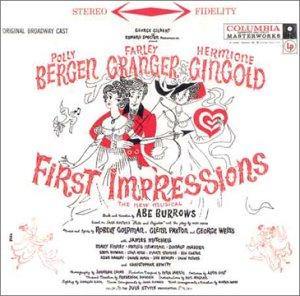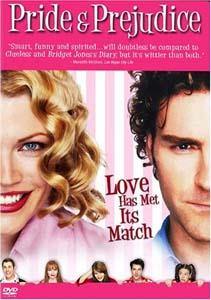Kandukondain Kandukondain: The Indian Film Industry takes on Jane Austen
It is a truth universally acknowledged...that Jane Austen's works must be popular wherever they are found. While her works have been translated into many languages across the world, it is only the recent films that have made her a household name, with even small children familiar with her characters and plots. It's no surprise, then, that Bollywood, the nickname given to the Indian film industry ("B" for Bombay) - should begin producing it's own Austen inspired films.
The Indian film industry is huge, producing up to 800 movies a year - twice as many as Hollywood - important since about 14 million Indian people go to the cinema everyday. With that kind of demand, English language films are often the inspiration for these grand musicals. Yes, musicals. Packed with color, comedy (though sometimes inadvertant) and lavish musical numbers, these films are like none produced anywhere else.
 In 2000, a modernized version of Sense and Sensibility was produced, entitled Kandukondain Kandukondain. The film (in Tamil with English subtitles) follows two sisters after the death of their father. When their stepbrother and sister-in-law force them from their family home, they are left to find work in the big city to care for their mother and younger sister. The pretty middle sister, though unlucky in love at first (ah! The schemeing and unworthy stockbroker who breaks her heart!) finally finds romance with an older soldier who is a friend of the family. The oldest sister, while it seems hopeless at first, at last marries her knight in shining armor, a young, up and coming filmmaker who is ostracized by his father after rejecting the family business in hopes of a directorial career.
The cult following Kandukondain recieved, in some part, must have inspired Gurinder Chadha, the director of the acclaimed film Bend it like Beckham. She is in the middle of filming a modernized English language version of Pride and Prejudice, that, while Bollywood in nature, is meant to appeal to widespread British and American audiences.
Starring Aishwarya Rai, a former Miss World, as Lalita Bakshi and Martin Henderson (Windtalkers) as Will Darcy, it looks to be the most unusual member of the Austen film family yet. The movie, which began filming in London in July (2003) tells the story of a family with four daughters and how their parents find it difficult to find grooms for them because they cannot afford to pay huge sums as dowry. "Our version may have different cultures and settings, but it's still about people marrying from different backgrounds." Says the Chadha. The movie which will include song and dance routines (and is said to be "all singing/ all dancing"!?) is being filmed on location in India, the UK and U.S. "Other British films are said to be 'too small and inward-looking' but this hopefully pushes the boundaries of what British cinema is...My intention with this film is to introduce Bollywood cinema with a British twist to all the towns and cities and the heart of people across America.”
In 2000, a modernized version of Sense and Sensibility was produced, entitled Kandukondain Kandukondain. The film (in Tamil with English subtitles) follows two sisters after the death of their father. When their stepbrother and sister-in-law force them from their family home, they are left to find work in the big city to care for their mother and younger sister. The pretty middle sister, though unlucky in love at first (ah! The schemeing and unworthy stockbroker who breaks her heart!) finally finds romance with an older soldier who is a friend of the family. The oldest sister, while it seems hopeless at first, at last marries her knight in shining armor, a young, up and coming filmmaker who is ostracized by his father after rejecting the family business in hopes of a directorial career.
The cult following Kandukondain recieved, in some part, must have inspired Gurinder Chadha, the director of the acclaimed film Bend it like Beckham. She is in the middle of filming a modernized English language version of Pride and Prejudice, that, while Bollywood in nature, is meant to appeal to widespread British and American audiences.
Starring Aishwarya Rai, a former Miss World, as Lalita Bakshi and Martin Henderson (Windtalkers) as Will Darcy, it looks to be the most unusual member of the Austen film family yet. The movie, which began filming in London in July (2003) tells the story of a family with four daughters and how their parents find it difficult to find grooms for them because they cannot afford to pay huge sums as dowry. "Our version may have different cultures and settings, but it's still about people marrying from different backgrounds." Says the Chadha. The movie which will include song and dance routines (and is said to be "all singing/ all dancing"!?) is being filmed on location in India, the UK and U.S. "Other British films are said to be 'too small and inward-looking' but this hopefully pushes the boundaries of what British cinema is...My intention with this film is to introduce Bollywood cinema with a British twist to all the towns and cities and the heart of people across America.”
Kandukondain Kandukondain is occasionally shown on British television and is available on DVD.
 Laura Boyle is a collector of Jane Austen Films and film memorabilia. She also runs Austentation, a company that specializes in custom made Regency Accessories.
Laura Boyle is a collector of Jane Austen Films and film memorabilia. She also runs Austentation, a company that specializes in custom made Regency Accessories.



1 comment
Thank you for recognizing this great adaptation. It is indeed a work of a kind. Although I am forced to point out the misunderstanding that the writer of this article has faced. It is a common conception that all films that come out of India are from Bollywood. However the tides have turned and films from other “woods” in India have made heads from all around the world turn (for eg. RRR which gained recognition at the Academy and in USA is not from Bollywood but from Tollywood (Telegu cinema)). Similarly, Kandukondain Kandukondain is not a Bollywood film but a Kollywood film which makes films in the Tamil language (one of the 22 recognised and widely spoken languages in India).
This message is not out of spite or contempt, but simply a clarification or an attempt at education.
It is a truth universally acknowledged that some people tend to pigeon-hole others more often than not. Not out of odium or disdain, but simple ignorance.
However I love the fact that in the title of the article the writer has mentioned “Indian Cinema” and I would also suggest all films from India be addressed as Indian Films and nothing else.
Hemanth
Leave a comment
This site is protected by hCaptcha and the hCaptcha Privacy Policy and Terms of Service apply.